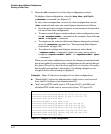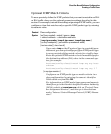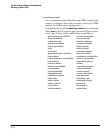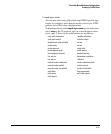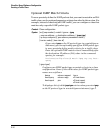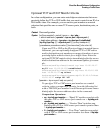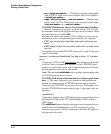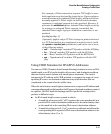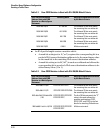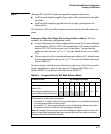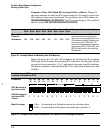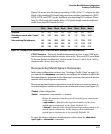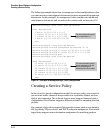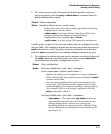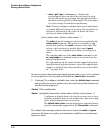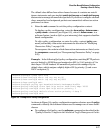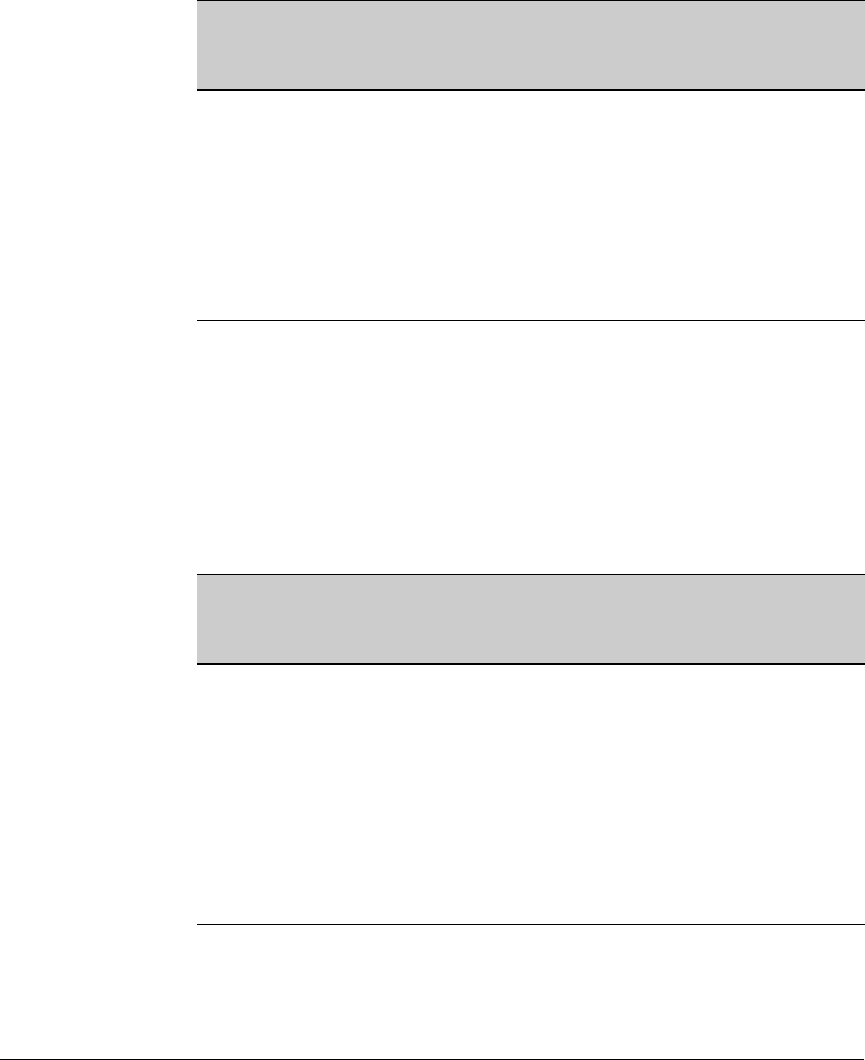
Classifier-Based Software Configuration
Creating a Traffic Class
Table 9-1. How CIDR Notation is Used with IPv4 SA/DA Match Criteria
IPv4 Source/Destination
Address Used with CIDR
Notation in a Match/Ignore
Statement
Resulting Mask Range of IPv4 Addresses Selected
by the Match Criteria
10.38.240.125/15 0.1.255.255 The leftmost 15 bits must match;
the remaining bits are wildcards.
10.38.240.125/20 0.0.15.255 The leftmost 20 bits must match;
the remaining bits are wildcards.
10.38.240.125/21 0.0.7.255 The leftmost 21 bits must match;
the remaining bits are wildcards.
10.38.240.125/24 0.0.0.255 The leftmost 24 bits must match;
the remaining bits are wildcards.
18.38.240.125/32 0.0.0.0 All bits must match.
■ An IPv6 prefix-length creates a mask in which:
• A mask-bit setting set to 1 (“on”) requires the corresponding bit in a
packet’s IPv6 source/destination address to be the same binary value
as the mask-bit in the matching IPv6 source/destination address.
• A mask-bit setting set to 0 (“off”) is used as a wildcard and allows the
corresponding bit in a packet’s IPv6 source/destination address to be
either binary value (0 or 1).
Table 9-2. How CIDR Notation is Used with IPv6 SA/DA Match Criteria
IPv6 Source/Destination
Address Used with CIDR
Notation in a Match/Ignore
Statement
Resulting Mask Range of IPv6 Addresses Selected
by the Match Criteria
2001:db8:0:7::5/64 FFFF:FFFF:FFFF:FFFF:: The leftmost 64 bits must match;
the remaining bits are wildcards.
2001:db8:0:7::5/72 FFFF:FFFF:FFFF:FFFF:FF00:: The leftmost 72 bits must match;
the remaining bits are wildcards.
2001:db8::244:17ff:feb6:d37d FFFF:FFFF:FFFF:FFFF:FFFF: The first 126 bits mst match; the “C”
/126 FFFF:FFFF:FFFC value in the mask allows four
possible combinations (D37C,
D37D, D37E, and D37F) in the last
block of a matching IPv6 address.
2001:db8:0:7:af:e2:c1:5/128 FFFF:FFFF:FFFF:FFFF:FFFF: All bits must match.
FFFF:FFFF:FFFF
9-20



